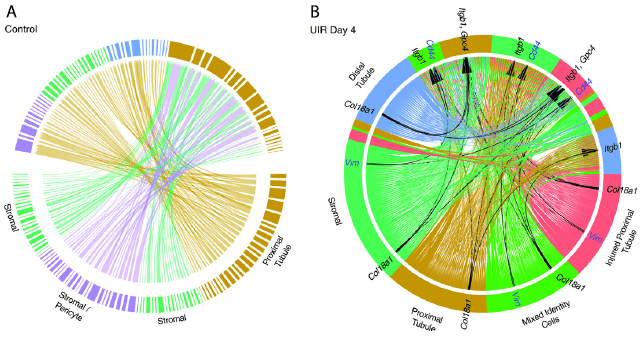First Comprehensive Atlas of Acute Kidney Injury at the Cellular Level
Published October 2020 | Journal of the American Society of Nephrology
Research led by developmental biologist S. Steven Potter, PhD, and colleagues has produced the most detailed "atlas" to date of transcriptional profiles related to acute kidney injury (AKI).
The research involved single cell RNA-sequencing (scRNA-seq), single molecule fluorescent in situ hybridization, bioinformatical analysis that demanded new algorithms, and immunofluorescent imaging. The resulting atlas has already revealed putative novel molecular and cellular targets of AKI.
“These include remarkably elevated pathologic cell-to-cell communications and several novel AKI-induced genes not previously recognized in AKI,” says first author Valeriia Rudomanova, MD, PhD.
Better understanding of early-stage AKI offers a chance to detect potentially reversible changes in uninjured cells. In the murine model, injured tubules dedifferentiated dramatically, including showing elevation of renal development genes Sox4 and Cd24a. (Sox4 is implicated in renal cell cancer and Cd24 was detected in dialysis patients with chronic kidney disease.) The study also demonstrated that while younger mice recover two weeks after unilateral renal ischemia (URI), older mice develop maladaptive fibrotic remodeling, marked by persistent Sox4 and Cd24a elevation.
“Our findings might hold potential for developing targeted treatments to augment AKI and interfere with its transition to chronic kidney disease (CKD), thus substantially contributing to the field,” says Rudomanova. Looking ahead, follow-up studies will focus on the functional significance of novel AKI-induced genes in in vitro human models and in vivo transgenic murine models of kidney injury.
Single-cell RNA Sequencing Identifies Novel Epithelial-to-Stromal Interactions in Adult Kidney Injury

A. Circos plot of ligand-receptor interactions between the proximal (brown) and distal (blue) tubules, the stromal cells (green), and the stromal/pericyte cells (purple) in the normal kidney. B. Circos plot of ligand-receptor interactions between the proximal tubules (brown), injured proximal tubules (red), mixed-identity cells (green), distal tubules (blue), and the stromal cells (teal) in the UIR day-4 kidney. Populations producing the putative ligand are labeled; black arrows show Vim-Cd44 (highlighted in blue), Col18a1-Gpc4, and Col18a1-Itgb1 (highlighted in black) ligand-receptor pairs.




